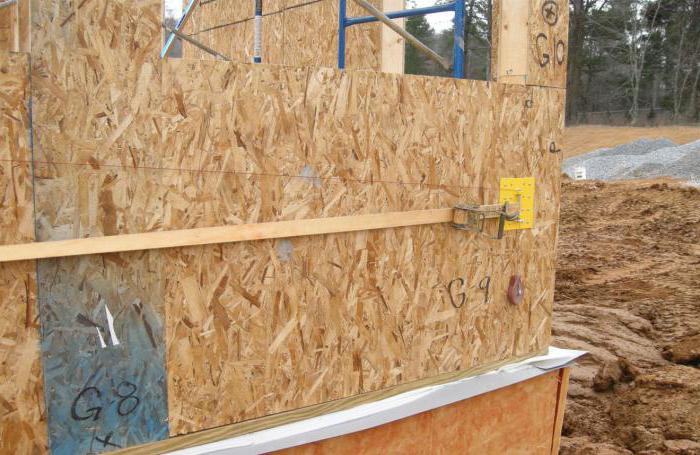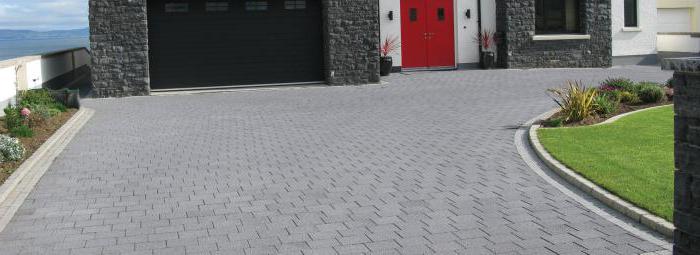Paving stone production: equipment, technology
For covering of sites and garden pathsdifferent materials are used. If earlier the basis of this segment was formed by a stone, nowadays even rubber panels with wood can be used for such decking. But this is, rather, designer variations on the theme of street paving, and in practical terms, paving blocks vibropressed almost has no competitors. The material has long settled in its niche and, what is noteworthy, on the whole retains the classic technique of production. Actually, an uncomplicated method of production makes it possible to produce pavers even in artisanal conditions. But in any case, in order to obtain a qualitative result, it is necessary to observe technological subtleties using appropriate equipment.
Paving stone in a family of paving slabs
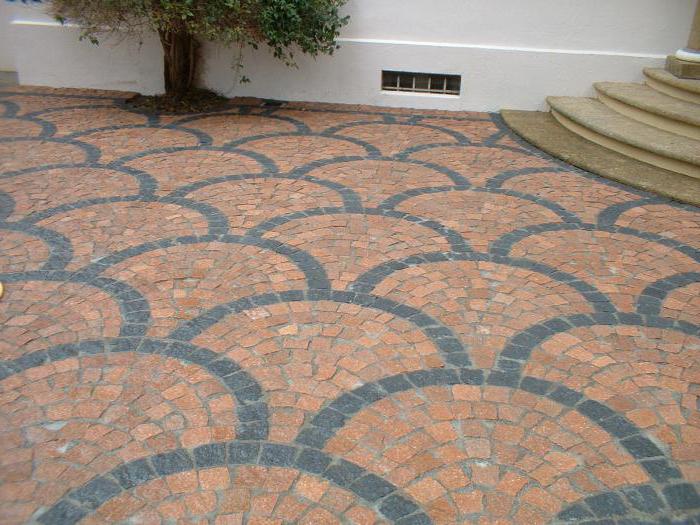
Usually, stone blocks are the material from whichlaid out area or track. However, in the classical sense, this term still denotes the coating itself. Also to the paving stone can be attributed a stone of certain dimensions, from which the paving is carried out. Against the background of improving technologies for the construction of roads and pedestrian surfaces, the requirements for the elements of the flooring have also changed. Thus, the paving stones entered the general group of paving slabs. In any case, the techniques of production of these materials overlap in many ways. The differences are in the composition. Thus, the manufacture of pavers usually involves the use of dense stone, clay or limestone. In the simplest versions, concrete can also be used. Provided quality production, it is possible to obtain wear-resistant and durable elements for coatings with different characteristics. There are also modern variations that emphasize the decorative effect.
Vibrocompression Technology
There are several manufacturing methodspaving stones, but the most common is vibrocompression. To implement this technology, special forms are used for pavers, which form a matrix located on the platform. The main task of the equipment is to provide a qualitative consolidation of the structure of the mixture by means of vibrations. Together with the mold, a punch is also used. This is a kind of piston, which also helps to compact the solution by means of oscillatory movements. In this way, the function of mass pressing is performed, from which elements for coating are subsequently made.
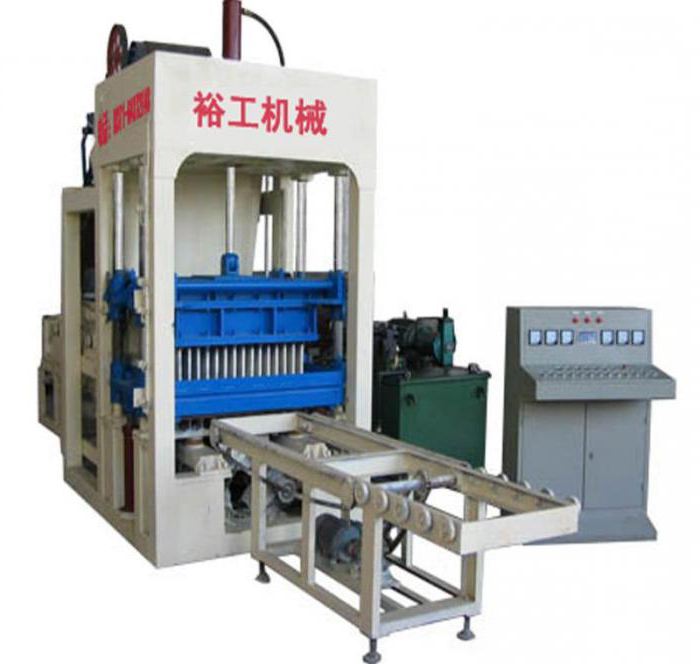
Outwardly the design of such equipmentIt is a cellular matrix, which can be made by hand. However, the industrial production of paving stone blocks involves the connection of quite powerful engines, which provide the effect of vibration pressing. The characteristics of the future tile depend to a great extent on the quality of the power impact. True, the composition also plays an important role.
Hyper pressing method
As in the case of vibrocompression, thistechnology aims to ensure the maximum possible consolidation of the mixture, from which a dense and strong paving stone should subsequently be obtained. Only approaches to achieve this result differ. Hyperpressing also involves the use of the paving stone form in the process of realization, but in the very effect of the mixture it does not provide a vibratory effect. The main stimulation occurs under the influence of high pressure, which turns out to be a press. Depending on the required material properties, the load on the mixture can vary from 150 to 250 kg per 1 cm2. The choice of the parameters of force action alsodepends on the components of the composition. It should be noted that the pressure acts on the solution in the matrix, both during setting and during polymerization, that is, curing. It is this technological nuance that gives the paving stone an increased compressive strength.
Equipment for hyperpressing
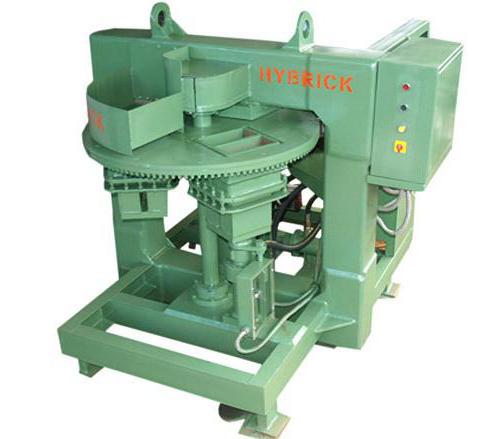
As noted above, for the use of technologyA special press is required, which will exert pressure with subsequent consolidation. The most common hydraulic units with single and double acting. In the first case, machines are equipped with a single cylinder, which provides the action on the matrix. The work of two-sided aggregates provides for the impact on the mold itself and on the punch. That is, in this case a more productive production of pavers is realized, although the quality from the double impact can suffer. True, bilateral machines provide not only a quantitative increase in production indicators, but also increase individual quality characteristics. In particular, the use of such a press allows to minimize the gradient of compaction. Also, the structural features of this technique exclude the need for the use of pallets.
Manufacture of pavers
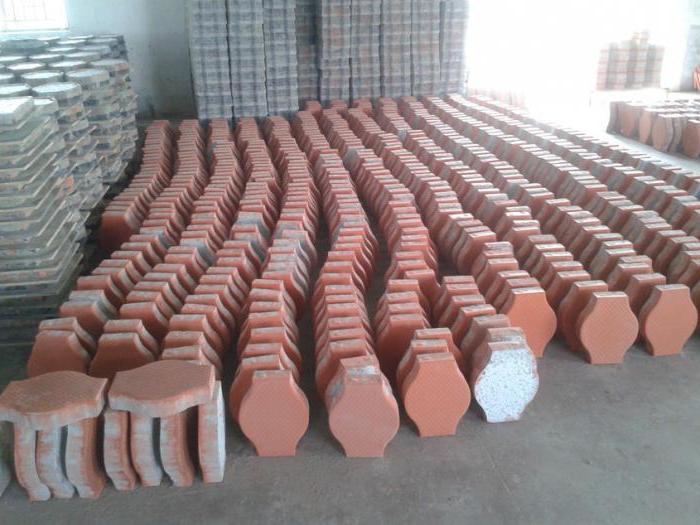
This is one of the most difficult in terms of technologyways of making pavers. This is due to the requirements for the initial mass, and the need to use several principles of solution processing. Unlike previous methods, in this case, heating of the material is also envisaged in order to accelerate the polymerization. But the basic principle remains traditional. Like the solution from which the paving stone is made, the mixture for this technology is initially placed in a special shape. But instead of the usual matrix use a vibrating table with a vibrating surface. Due to the vibrating action, the seal effect is again achieved, after which the material is transferred to the room where the evaporating heaters operate. In such conditions, the blanks for the future paving stone dry and gain optimum strength. As a rule, the final acquisition of operational qualities occurs in a month.
Equipment for vibration control
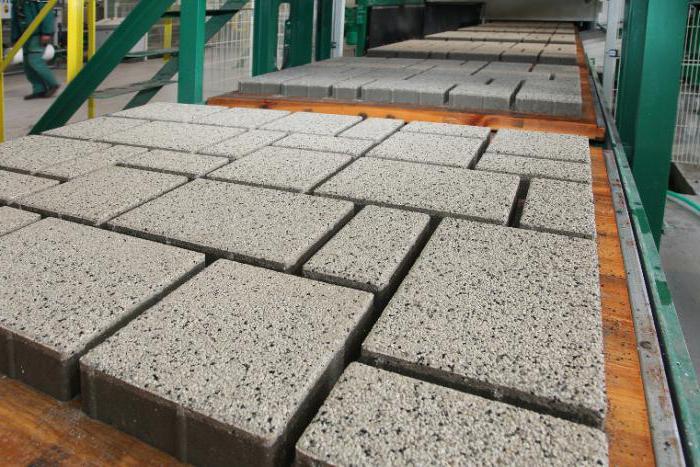
The central place in the production complexoccupies a molding vibrating table, which by means of a special drive excites vibrations of the mixture. As a result, the solution is sealed. Typically, the vibrating machine for the production of pavers is supplied without a transformer, therefore, in a separate order, it is necessary to provide the equipment with appropriate electrical engineering. Depending on the requirements for the production process, transformers with a capacity of 2.5-5 kW are used. To simplify the production, electric vibrators are also sometimes used, which can be supplemented with solutions for compacting solutions. A feature of this combination is the possibility of sifting loose mixtures through a vibratory unit and, at the same time, providing a press seal.
Features of the manufacture of clinker pavers
Like a conventional clinker, paving stones of this typemore like a brick, but with increased strength properties. This is achieved largely through the use of special types of clay. The very production of clinker pavers is not oriented to the sealing processes by means of vibrating and pressing machines, but by firing technology. The manufacturing process begins with a procedure for grinding the primary composition, after which the mixture is extruded into molds through a special extruder.

Next comes the first exposure to thermalradiation. Forms are placed in special chambers, where the mass is heated from different directions. At the final stage, the production of paving stone in the form of clinker involves the execution of firing in furnaces at temperatures up to 1200 ° C.
Features of the granite pavers
The technological process of forming pavers fromGranite is also fundamentally different from the listed methods. In this case, mechanical processing of solid stone is realized by means of sawing machines. That is, the manufacturers do not use any mixtures and modifying additives, which makes it possible to count on the ecological cleanliness of the coating. As a rule, the production of granite pavers provides for smooth processing of the stone along the edges in order to form square or rectangular smooth elements. But due to various reasons, the use of fragments with uneven edges can be justified - this is the so-called chipped pavers.
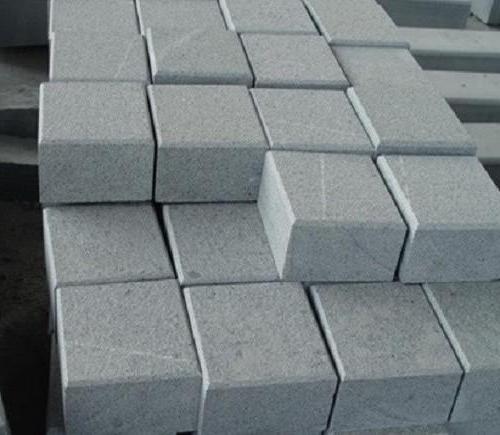
Conclusion
Qualitatively laid paving stone is capable ofPerform their functions for decades without breaking down or deforming under mechanical influences. But, unfortunately, not every material of this type is associated with longevity. Depending on the technology used to manufacture the pavers, you can form an opinion on the possible performance of the product. If you need inexpensive and versatile material, then it is worth giving preference to cement-lime tile, which is optimal for decorating sites and paths at a private house. Clinker pavers are suitable for the same purposes, but at the same time provides a decorative effect. If the paving strength comes to the fore, then it's more reasonable to bet on granite blocks.

